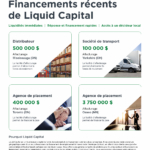43% of companies don’t get paid on time. Here’s how to deal with non-paying customers
Dealing with non-paying customers can be stressful. Use these strategies to manage late payments and maintain a consistent cash flow.

If you operate in the B2B industry, receiving invoice payments on time is a major concern that can make or break your business. Even with great sales and quality products or services, many companies still experience delays when expecting payment.
43% of companies polled by Atradius reported they often have to deal with clients that don’t pay on time. Dealing with those overdue payments means significant time is consumed by customer follow-ups and chasing down unpaid invoices.
While there is occasionally some room to account for late payments, it can be detrimental to your business if invoices are consistently late. To avoid unwanted stress, you need to know how to deal with non-paying customers and have a plan in place to make sure there isn’t a lag in cash flow.
How to avoid non-paying customers
Below are four ways to take back control:
1. Research and reassess
Before you begin working with a new customer, look at their credit reports and make assessments based on customer credibility and trustworthiness. For existing clients who fail to follow your invoice terms, consider reassessing their creditworthiness and doing business with them.
You can involve us at Liquid Capital in this process. We can run credit checks for you and evaluate a customers’ risk factor. In addition, we can advise you whether a new customer is worth doing business with or not, and if they fall in the high-risk category (how likely are that customer would be to default their bill payments). An added benefit of getting us involved early is learning if you’ll be able to make use of invoice factoring to improve cash flow from your customer’s future invoices.
2. Have a contract in place
It doesn’t matter if your new customer is a family member or a business professional you’ve known for a while. You must have a contract in place before you begin working with a new client.
A contract is a legally binding document that outlines the specifics of your working relationship with a customer. What product or service are you offering your customers? When and how will the customer pay you? What will happen if the customer fails to pay you on time?
The contract is your chance to protect yourself from non-paying customers. You can discuss all costs and fees associated with late payments before-hand. Ensure you include a payment schedule that identifies the terms of payments (such as deposits, milestone payments, payments before delivery, etc.). You can also make sure you’re implementing terms that will create a consistent cash flow for you (for example, using 30, 60, or 90-day terms depending on your need for cash every month).
You can also include a “default interest” clause in the late payment policy within your contract to encourage timely payments. If the customer misses a payment, they’ll pay a higher interest rate. This term may influence your customers to prioritize when choosing who to pay at certain times. They are likely to give priority to paying partners who will charge more for late payments.

3. Ask for a deposit
After running risk assessments and background checks, if you’re still unsure about a customer’s credibility, you can ask for a deposit. This way, you can absorb some of the loss in the event of non-payment since you already charged a portion of the payment upfront.
It would help if you decided on the deposit structure based on the industry type and the product or service you’re offering to your customers. It’s also important to consider how much deposit your customer can make. If your payment is contingent on them getting paid by their customers, you should consider that and adjust the deposit term or schedule based on their cash flow. After all, you’re trying to build relationships with your customers, so it’s probably best to find a balance and discuss mutually beneficial terms.
4. Send invoices ASAP
If you think a client might disregard your payment terms and delay payment, it’s best to send an invoice as soon as you’ve completed the work. This can encourage on-time payment since the work is still top of mind, especially if they’re happy with the result. This also allows their A/P team to manage their payment process on time.
Implement these tips and speed up your invoice payment time to boost a steady stream of cash flow. If your cash flow needs are immediate and cannot be resolved with these strategies, you can use invoice factoring to inject some capital into your business.
Featured image by Adobe Stock, secondary image by Pixabay






